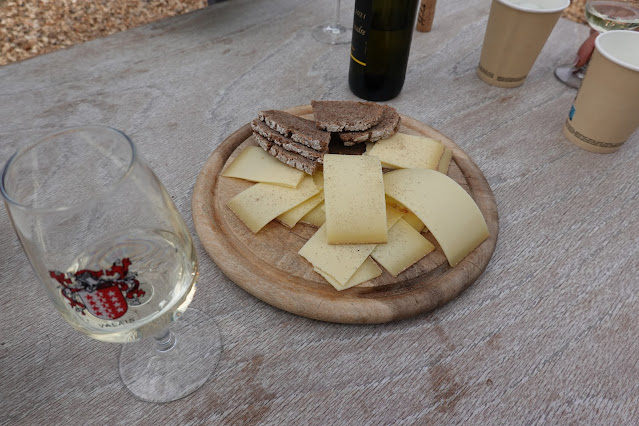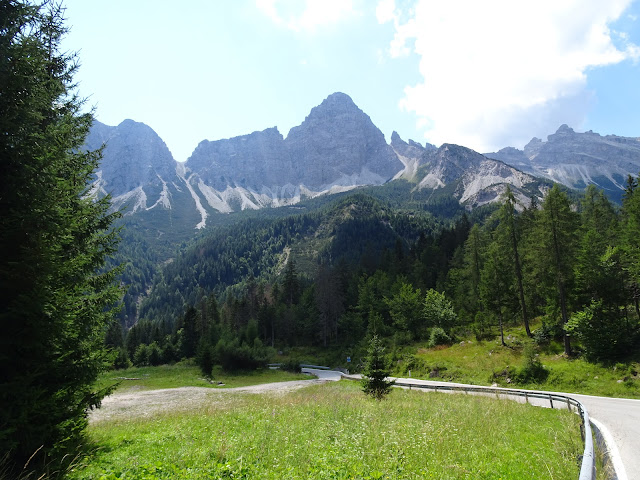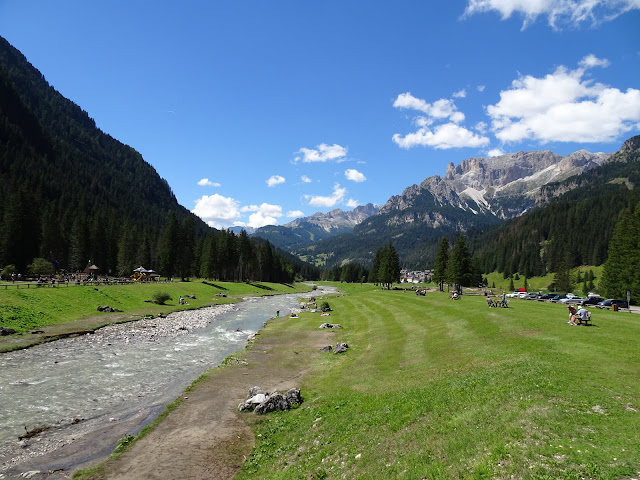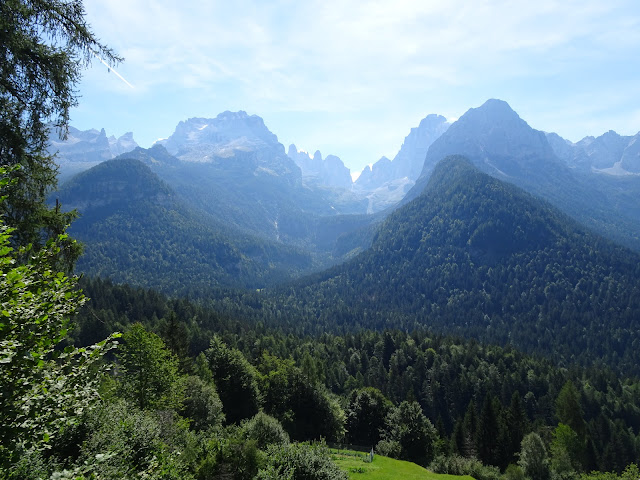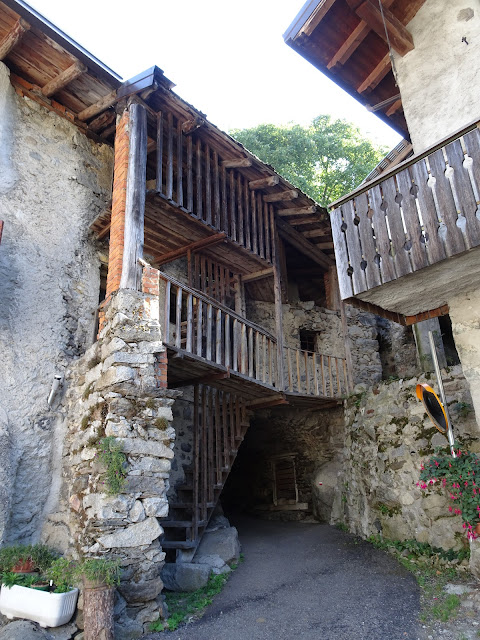2022 Hiking in the Swiss/French Alps
After weeks of cycling we left the bikes behind and packed our hiking gear. First stop: Leukerbad, a small mountain village in the Swiss Alps, surrounded by vertical cliffs. The place is famous for the therapeutic effect of the thermal water emanating from several springs. The first baths were built and used by the Romans!

We rented an apartment for a week with a balcony and a fabulous view!
A typical Swiss breakfast on the balcony every morning.....
... while watching the climbers on the Via Ferrata "Leukerbad Gemmi Daubenhorn".
The Via Ferrata is the longest in Switzerland (9km), takes 8 hours to complete, with 1,158m uphill climb and is rated extremely difficult. There is even a hanging bridge in a cave! Not for somebody with vertigo!
There are 65 springs in town, emitting 3,9 million litres daily of up to 51° C warm water. There is a large public thermal bath with fabulous facilities, as well as many private ones in hotels. The image above shows one of the springs with a bath from the old days.
A 600-metre-long footbridge, which is suspended four metres above the river bed, passes through the imposing Dala Gorge, where some of the thermal springs are visible.
The Gemmi trail is an old mountain path leading over the Gemmi Pass into the Bernese Alps. It has been used for centuries by soldiers, pilgrims and traders. The trail is spectacularly carved into the rock face. I highlighted it in yellow below to make it more visible.
The trading route heading north into the Bernese Alps.
Lucky for people with bad knees: there is a cable car to go back down.
Here is an example of the Swiss attitude to risk in the mountains: you are responsible for yourself! We followed another old trading route from Leukerbad to Albinen that starts as an unsealed forest track, turns into a hiking trail and then turns into a sequence of 8 ladders going up 100m on a cliff! There was no requirement to wear a harness and clip in, no warnings and some of the ladders had rungs missing.
After the second ladder, we decided it was getting too exposed and we turned around.
In the old days, the locals climbed these ladders with their goods to go to the markets! It appears they still don't mind the exposure.
We circumnavigated the cliff along the road and through tunnels. From the top we climbed back down to inspect the exit. You can see the road below where the climb starts. Definitely not for us!
The area has a large network of mountain biking and walking trails, all of them with spectacular views....
... and some great food along the way.
My friend Erna organised a few days in a B&B in the Valais (www.chaletdiognysos.ch). A charming place with lots of character, attention to detail and a personal touch. The owners, Sophie and Jérôme, have a lot of quirky ideas, are fantastic cooks and fabulous hosts! We even had a raclette in a wine barrel!
The Valais is famous for its "bisses", which are historic irrigation channels that deliver water from high mountain streams to pastures, fields, vineyards and orchards. Many bisses are still in use today and are carefully maintained. Some are in open ditches, some are timber structures along cliffs.
Grand Bisse de Lens
View of the valley floor with the Rhone river. Lake of Geneva is around the corner to the right and the Mont Blanc massive is behind these mountains.
Some of the more exposed sections. In the old days there were no handrails or ropes!
Hiking to the water source for the Bisse du Tsittoret....
... with the traditional glass of Valais white wine, bread and cheese along the way with our hostess and tour guide Sophie.
Our third walk was along the Bisse du Ro, which was the most exposed one of the three.
The technique is still the same as in the old days. The timber irrigation channel is hanging from cantilevers that are wedged into the rock wall (with very crumbly rock!). The current method above and a section of the original channel below.
These walks are very diverse and interesting with a comfortable incline, fabulous views, ....
.. hanging bridges, ....
... places to worship and...
... even tunnels.
The last few days we spent in Chamonix in a small apartment with great views, a bakery across the road and a deli around the corner.
One of the best walks in Chamonix is the "Grand Balcon Sud" from La Flégère to Planpraz. It follows the contour lines with the full panorama view of the Mont Blanc massive for the entire walk. Just amazing!
During our 2 months in Europe (mid-July to mid-September) we got rained on for 10 minutes in total! Absolutely unprecedented! There were a few days with late-afternoon thunderstorms that we managed to avoid. Since we spent most of the time in the mountains we were not impacted by the heat waves and had a fabulous holiday.































